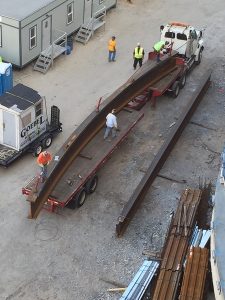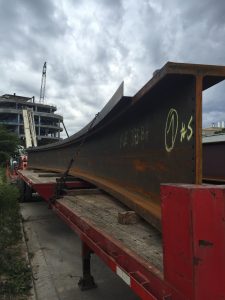Data collected by the Federal Highway Administration previously showed in the United States, there were over 45,000 bridges with a “POOR” classification rating. This topic has been discussed across the media and in both state and federal political circles for several years now earning increasing calls for boosts to this critical infrastructure across our country. As a result, there has been a favorable call for the new administration to release a federal infrastructure bill that will help boost funding as well as increase jobs within the construction and transportation industries which have been negatively affected during the Covid-19 pandemic.
The engineering and construction of replacement bridges to support these critical portions of our national transportation system will likely help create millions of jobs for many years to come through multiple levels of vertical job creation. As a country, we have many industries built upon a cross-country system of freight delivery that must navigate the roadways and bridges in disrepair. Bridges need to be re-designed and engineered to last for decades to come with new projections of the increased freight weights and volume that may not have been accounted for when many of the currently failing bridges were designed 50 or more years ago.
One of the crucial steps in these bridge replacements will be to accurately project the needed camber values to handle increased bridge traffic and weight. Camber is a term used in many fields referring to the slight curve and bend put into a structure such as structural steel, a stone arch, or even milled wood. The typical cambering of beams is to help add structural support to a wide span as seen in bridge construction. Its use in bridge construction helps offset the added weight from the materials in the road and bridge above it, including the vehicles which will travel across. This is commonly referred to as a positive camber, which places an upward curve into the bridge so that all the additional weight from above pushing downward does not cause the bridge to sag. One element of bridge failure can be when a bridge begins to sag and dip, sometimes referred to as negative camber.
Currently, there are over 250,000 bridges greater than 50 years old in the United States. These are in varying conditions but as more time passes, even those in acceptable condition currently will age and wear down requiring replacement. Engineering standards and real-world conditions have changed over the decades putting increased strain on these bridges. The average number of cars and trucks on the roads, as well as expected workloads, have likely changed beyond what the engineers had in mind years ago.
Proper accounting for the added bridge loads needed may require a couple of inches of beam camber curvature to be added to a beam span without heating the steel beams. Heated rolling can affect strength or structural integrity in some cases. In this case, cold-rolling of structural steel beams can achieve the intended curvature with a high tolerance for accuracy while maintaining the beam strength. Using a three-roll process, even extreme cases such as oversized beams with lengths over 70-80 feet or extra-large 44-inch beams can be rolled with a high tolerance for beam camber values.
Contact us today for a fast and accurate quote on your cambered structural steel beam project.









